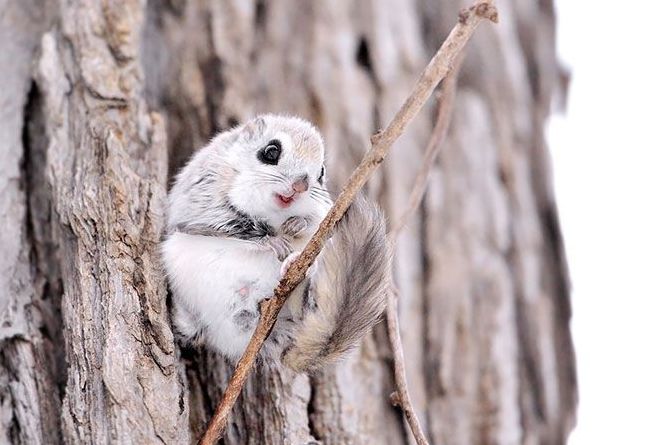|
|
Flying Squirrel
|
At birth, flying squirrels are mostly hairless, apart from their whiskers, and most of their senses are not present. Their internal organs are visible through the skin, and their sex can be signified. By week five, they are almost fully developed. At that point, they can respond to their environment and start to develop a mind of their own. Through the upcoming weeks of their lives, they practice leaping and gliding. After two and a half months, their gliding skills are perfected, they are ready to leave the nest, and are capable of independent survival.
• Diet
Flying squirrels can easily forage for food in the night, given their highly developed sense of smell. They harvest fruits, nuts, fungi, and birds' eggs. Gliding conserves energy. Many gliders have specialized diets and there is evidence to believe that gliders may be able to take advantage of scattered protein deficient food. Additionally, gliding is a fast form of locomotion and by reducing travel time between patches, they can increase the amount of foraging time.
|
|









